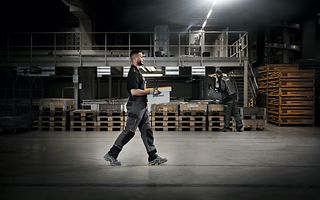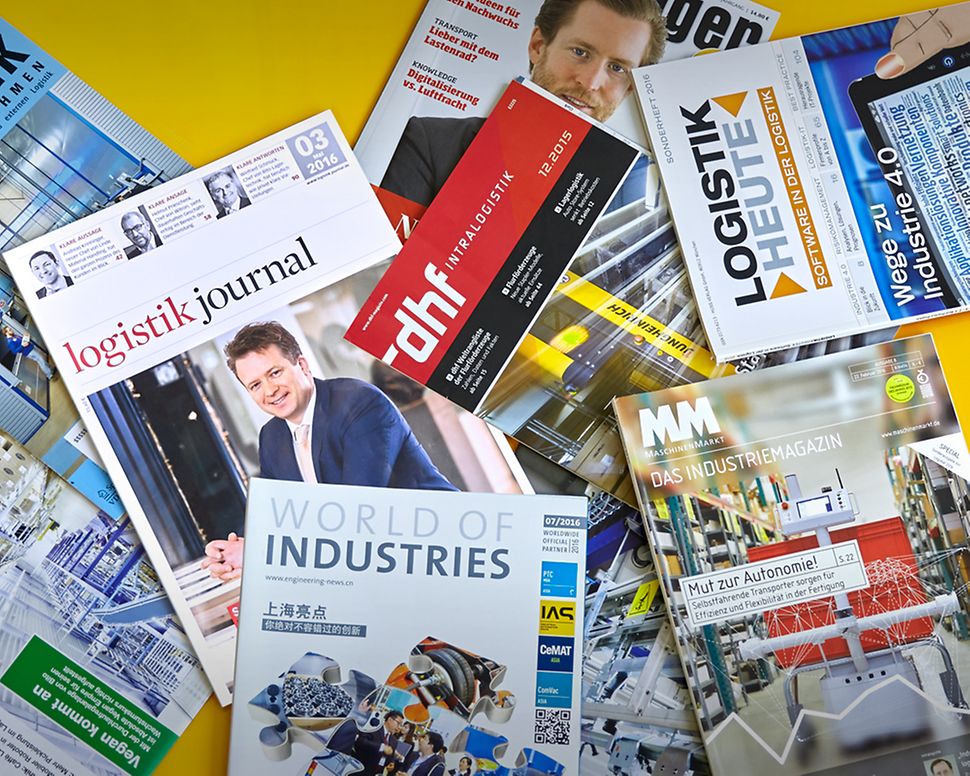- H1: Value of incoming orders +6 per cent and revenue +10 per cent
- EBIT at previous year’s level, EBT and profit or loss continues increase
- Orders on hand: +12 per cent compared with the end of 2018
- 2019 financial year: Outlook for revenue confirmed, adjusted for incoming orders and EBIT
- Massive development of lithium-ion battery production
The Jungheinrich Group is looking back on a reasonable first half of 2019. Despite an increasingly challenging market, revenue and incoming orders have increased again in comparison with the same period of the previous year. The main driver of this positive performance was the new truck business, with a two-digit growth rate. While EBIT for the six-month period is at the previous year’s level, EBT and profit or loss increased.
However, the market continued to slow in the second quarter of 2019 compared with the first quarter. This is due to the worsening macroeconomic environment and the related current market decline in material handling equipment. In view of this development, the Board of Management has adjusted the forecast for the current financial year. Incoming orders should now range between €3.80 billion and €4.05 billion (previous forecast: €4.05 billion to €4.20 billion). Group revenue is expected to remain within the previous forecast range of €3.85 billion to €4.05 billion. According to current estimates, EBIT should be between €240 million and €260 million in 2019 (previous forecast: €275 million to €295 million).
Jungheinrich continues to place particular emphasis on strategically important fields of activity and invests in cutting-edge lithium-ion battery technology, for example. In early 2019, Jungheinrich, in partnership with Triathlon Holding GmbH, became the first intralogistics supplier to establish a centre of excellence for the production and recycling of lithium-ion battery systems, “JT ENERGY Systems GmbH”. Even prior to the operational launch, capacity is being massively expanded. The former Solarworld plant in Freiberg near Dresden was taken over for this purpose.
Hans-Georg Frey, Chairman of the Board of Management of Jungheinrich AG: “The first half of 2019 went well for Jungheinrich overall. The current financial year had a strong start; however, we have recently registered a significant fall in customer investing activity. The uncertainties resulting from the continuing trade conflicts also have an effect on our industry. We have therefore updated our forecast for 2019 early on and are expecting a somewhat lower development in incoming orders and EBIT. Our orders accounting for five months of production remain on course and our revenue goal remains the same.
As the leading provider of electric trucks, we are firmly convinced that we are on the right track with our proven growth strategy. The expansion in capacity of JT Energy Systems guarantees that we can meet the growing demand for electric forklift trucks with lithium-ion batteries. We are the industry trendsetter. With our holistic approach of providing all components such as drive systems, batteries and battery chargers from a single source, we ensure our trucks boast optimum energy efficiency.”
Development from January to June 2019
Market development by region
The market volume for material handling equipment declined 5 per cent across the globe in the first half of 2019 in comparison with the same period of the previous year. This corresponds to almost 42 thousand units. The downturn in the second quarter of 2019 was more significant than in the first quarter of 2019, particularly in Europe. Looking at June on its own, the European market actually declined by 16 per cent. This downturn in the reporting period is by and large due to the steep decline in orders in the North American and European markets. In contrast, the increase in market volume in China resulted from solid demand for warehousing equipment, which was, however, largely cancelled out by the negative market development for IC engine-powered forklift trucks. A little more than half of the steep decline in demand in North America resulted from fewer orders for warehousing equipment.
Market development by product segment
The global market volume for the warehousing equipment product segment declined 2 per cent against the same period of the previous year. In this environment, the robust growth on the Chinese market was largely cancelled out by the negative market developments in North America. The 4 per cent lower global market volume for battery-powered counterbalanced trucks was mainly based on declining demand in Europe. The significant decline in demand of 9 per cent around the globe for IC engine-powered forklift trucks was due to a drop in orders from Asia, North America and Europe.
Business development Jungheinrich
Incoming orders in the new truck business, based on units, which includes orders for both new forklifts and trucks for short-term rental, totalled 67.0 thousand units in the first half of 2019 and were thus on a par with the same period of the previous year (67.4 thousand units), despite noticeable downturn in the core market. At €2,065 million, the value of incoming orders, which covers all business fields – new truck business, short-term rental, used equipment and after-sales services – exceeded the previous year’s figure of €1,946 million by 6 per cent in the reporting period. Orders on hand for new truck business came to €1,015 million as of 30 June 2019, which is €118 million or 13 per cent higher than the previous-year figure (€897 million). Compared with orders on hand of €907 million as of year-end 2018, it represents an increase of €108 million or 12 per cent. Orders therefore accounted for five months of production. 58.8 thousand trucks were produced in the first six months of the current year. This is roughly the same as in the previous year (58.9 thousand units). Group revenue of €1,956 million in the first half of 2019 was 10 per cent higher than in the previous-year period (€1,784 million). In light of the negative effects from pricing pressure on the market, the start of a decline in capacity utilisation in individual plants, and the consequential effects of the increase in raw materials prices in the previous year, we were only able to generate earnings before interest and taxes (EBIT) of €127 million in the first half of 2019, which was on a par with the previous year’s figure (€127 million). Earnings before taxes (EBT) reached €118 million at the end of the first six months (previous year: €115 million).
Key figures at a glance
| Q2 2019 | Q2 2018 | Change
in % | H1 2019 | H1 2018 | Change
in % |
Incoming orders (units) | 33,700 | 34,900 | -3.4 | 67,000 | 67,400 | -0.6 |
Incoming orders (€ million) | 1,044 | 1,024 | 2.0 | 2,065 | 1,946 | 6.1 |
Production of material handling equipment (units) | 29,700 | 28,900 | 2.8 | 58,800 | 58,900 | -0.2 |
Revenue (€ million) | 1,008 | 912 | 10.5 | 1,956 | 1,784 | 9.6 |
EBIT (€ million) | 67.2 | 69.2 | -2.9 | 126.8 | 127.1 | -0.2 |
EBIT ROS (%) | 6.7 | 7.6 | --- | 6.5 | 7.1 | --- |
EBT (€ million) | 61.7 | 64.1 | -3.7 | 118.2 | 115.3 | 2.5 |
EBT ROS (%) | 6.1 | 7.0 | --- | 6.0 | 6.5 | --- |
Profit or loss (€ million) | 44.4 | 45.0 | -1.3 | 85.2 | 82.4 | 3.4 |
Capital expenditure1) (€ million) | n/a | n/a | --- | 65 | 41 | 58.5 |
R&D expenditure (€ million) | n/a | n/a | --- | 43 | 41 | 4.9 |
Employees (FTE2), 30/06) | | 18,221 | 17,293 | 5.4 |
- Property, plant and equipment and intangible assets without capitalised development expenditures
- FTE = full-time equivalents





